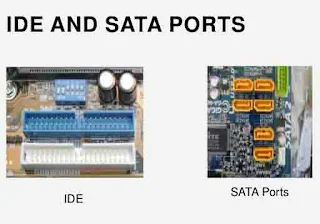Computers are sophisticated electronic devices that are needed by many people today. Computers help us to do complex tasks faster. So in order to work optimally, the computer needs a variety of supporting hardware which is located on the computer motherboard.
Motherboard
A motherboard is a place where various computer components are connected to one another. Motherboards in circulation today have slightly different component positions. Many people do not know the parts and functions of the components of a computer.
Knowledge of motherboard parts and their functions can be a basic skill that you must master, especially for those of you who always use your computer every day. So, we have immediately prepared a complete discussion of the parts of the motherboard and their functions.
Computer motherboard parts
Processor socket
The first part of the motherboard is the processor socket. Its function is to place the computer processor in place, generally around this socket there are four holes for installing the heatsink/processor fan. The processor is the hottest component on the motherboard, so it requires a heatsink on top of the socket.
Before buying a processor, make sure you know the socket type first, because if it's wrong it will be useless if the processor can't be installed. Examples of some processor sockets that we often encounter today are:
Intel processor socket
- LGA socket 1151
- LGA 1150 socket
- Socket LGA 1155
AMD processor socket
- AMD AM4 socket
- AMD AM3 socket
- AMD AM2 socket
- AMD 939 socket
Hub controller or NorthBridge
The hub controller or it can be called the northbridge is a device on the motherboard that has a function to control the communication of the RAM slot, VGA Card and PCI Express socket with the processor. If you are looking for it, the hub controller is located on the same side with the processor.
Southbridge controller
Meanwhile, the southbridge controller has a function to control computer devices such as BIOS, CMOS, USB, keyboard, mouse, modem, LAN and so on. The position of the southbridge is close to the PCI Express slot.
RAM
Memory Slot
RAM Memory
The RAM memory slot has an easily recognizable shape, which extends near the processor socket and functions to install RAM on the motherboard. Usually, the number is more than one RAM slot. Make sure before buying RAM, pay attention to the socket type first, because there are several types of RAM currently available such as DDR, DDR2, DDR3 and DDR4.
BIOS Chip
BIOS ( Basic Input Output System ) is a chip device on the motherboard with the function of controlling all the hardware on the motherboard. The BIOS works when the computer boots by checking that all hardware is ready to use.
When there is an error or hardware error, usually the BIOS will give a signal with a beep. Now you can do a damage analysis from the many beeps that come out of the BIOS device. Nowadays the BIOS is being replaced by UEFI which comes with more advanced technology, but the function remains the same.
IDE / SATA slot
IDE / SATA slots have a function to connect hard drive devices to the computer. Today motherboards mostly use SATA slots instead of IDE. The SATA slot is characterized by a small shape like a USB slot with an L-shape. As for the IDE slot, the model is elongated with many pins.
PCI Express slot
The PCI Express slot has a function to attach additional peripherals to the computer. PCI Express is located next to the AGP slot, for the number of PCI Express is usually more than one slot. So you can install a LAN Card, Sound Card, TV Tuner, WiFi Card and other peripherals.
AGP and PCI Express X16 slots
The AGP ( Accelerated Graphics Port ) slot has a function as a slot for installing an external graphics card (VGA Card) on the computer. Its position is adjacent to the PCI Express slot, usually above the PCI Express slot. Now AGP slots are rarely found on new motherboards, now they have been replaced by PCI Express X16.
CMOS battery CMOS battery
CMOS ( Complementary Metal Oxide Semiconductor ) is a small coin-sized battery that functions to provide power to the BIOS and also functions to store settings in the computer BIOS.
When your computer often has errors, especially the time and date settings, it can be a sign that the CMOS battery has run out. Before replacing, make sure the CMOS battery type is the same as the series.
Power Controller Connector
The power controller connector has a function to connect a power source from the power supply on the motherboard. Generally, the number of pins on each motherboard varies, depending on the brand and type of motherboard. In order not to buy the wrong power supply, make sure the number of pins matches the one on the motherboard.
I / O ports
Input-output ports are a group of ports located on the back of the computer case. As the name implies, the I / O port can be an input device for a mouse, keyboard, flash disk, LAN cable, or microphone. The output can be used for audio, video, monitors, printers and so on.
Front panel connector Front panel monitor
Finally, the part of the motherboard that shouldn't be overlooked is the front panel connector. This section has a function to install the power button, restart, reset, LED power, LED hard drive and USB. Usually, it is distinguished by a different colour for each pin.
So that's the discussion about the introduction of the motherboard and its functions. How do you understand? If there are parts that have not been mentioned above, you can add them in the comments column below.
















Post a Comment